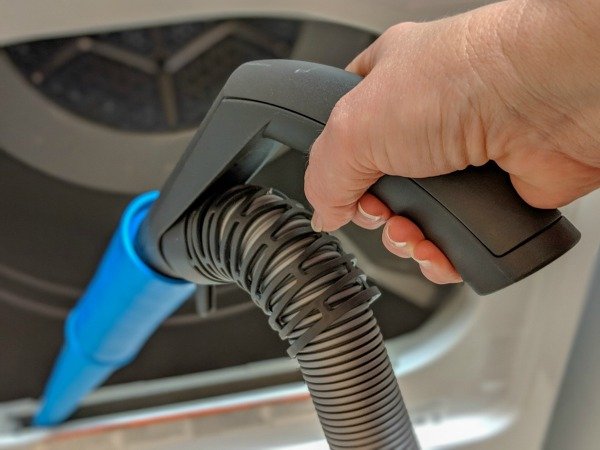When it comes to thoroughly cleaning your dryer’s exhaust vent of built-up lint, a debate exists over whether wet cleaning methods or dry vacuuming works best. While each approach has pros and cons, an integrated solution may be ideal when choosing between wet vs dry.
The Case for Wet Cleaning
Some experts argue that wet vent cleaning methods – using water, chemical treatments or pressurized steam – are necessary for stubborn lint and grease removal.
Water and cleaning agents dissolve hydrophobic oils and particles that accumulate on vent surfaces over time, loosening even caked-on debris for thorough vacuuming. Steam softens and breaks down dense lint mats, clearing obstructions that can impede airflow and trap moisture.
Proponents claim wet methods reach places dry vacuuming alone misses, providing a deeper clean. And follow-up vacuuming removes residual moisture that could promote mold.
The Case for Dry Vacuuming
However, others maintain that regular dry vacuuming of dryer vents is usually sufficient to maintain safety and performance.
Dry vacuuming is simpler, quicker and cheaper – requiring no water, chemicals or specialized equipment. It removes accumulated fluff and loose particles promptly before they compact into difficult-to-remove buildup.
Some argue wet cleaning risks spreading excess moisture that can recondense and promote corrosion, instead advising more frequent dry vacuuming to avoid heavy lint accumulations.
An Integrated Approach
In reality, an integrated approach utilizing both wet and dry methods based on vent conditions may work best. Initial wet cleaning aimed at dissolving caked-on debris, followed by thorough dry vacuuming to remove moisture, can provide deep cleaningefficiency.
Periodic dry vacuuming then maintains vents to prevent future heavy buildup requiring wet techniques. This “monitor and maintain” strategy may yield the cleanest, healthiest dryer vents over time.
In conclusion, rather than debating wet vs dry dryer vent cleaning methods, an integrated process that employseach technique based on the specific needs of the vent likely provides the most comprehensive cleaning results.

